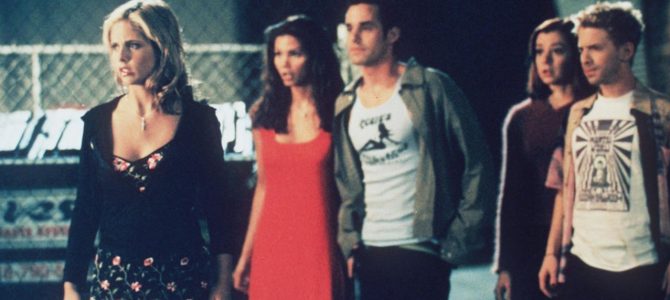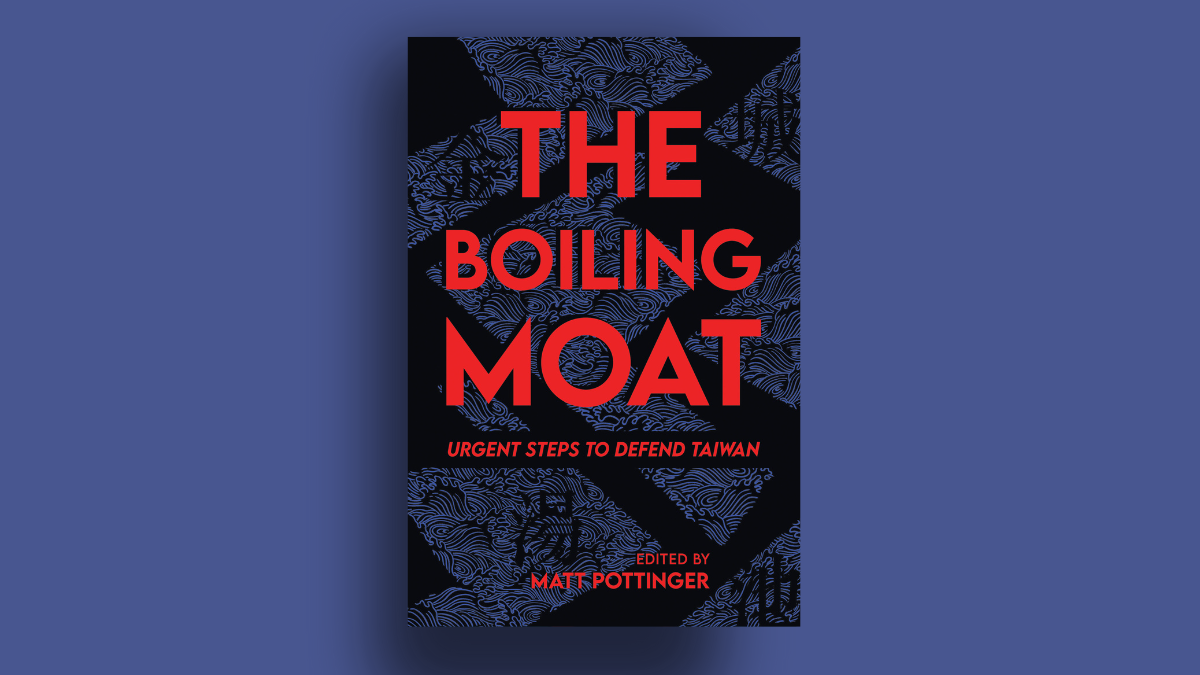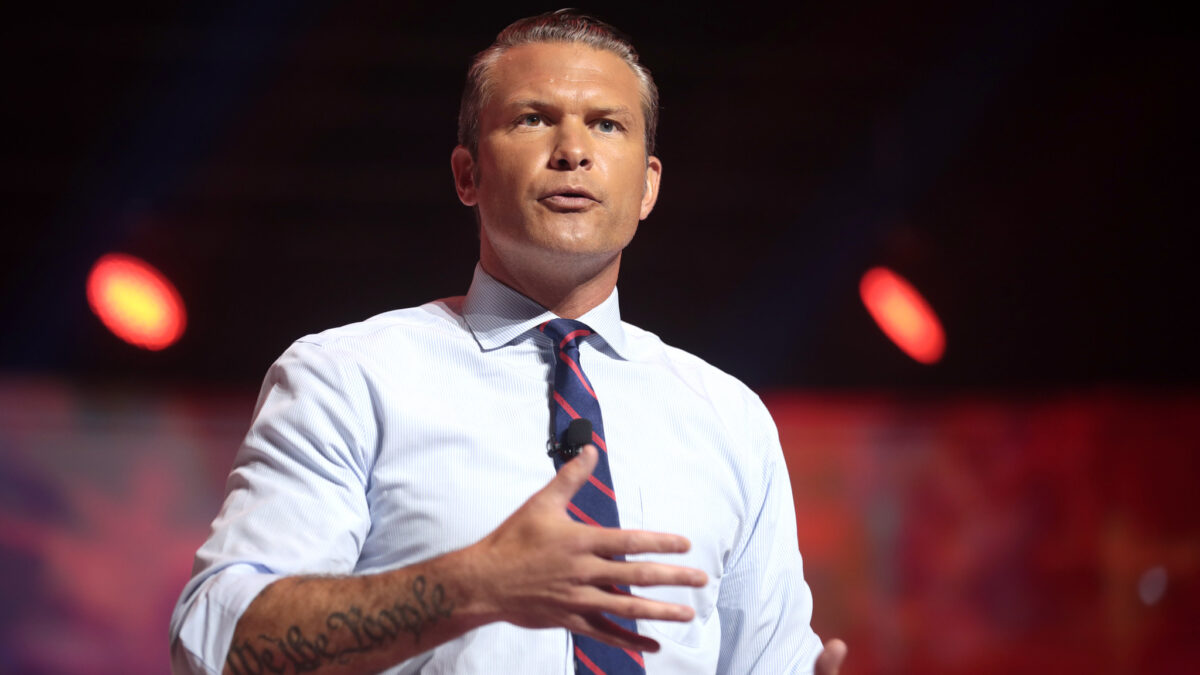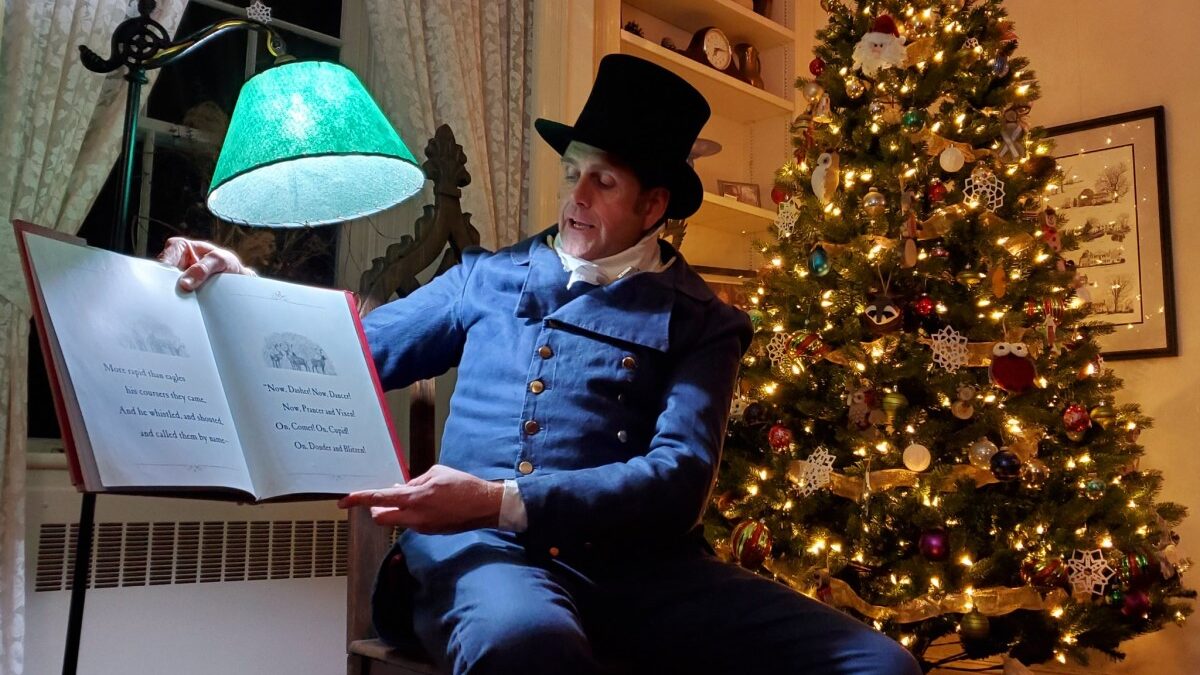
Today is Sarah Michelle Gellar’s birthday. Gellar originated the role of “Buffy, the Vampire Slayer” for television 20 years ago in 1997 (Kristi Swanson played an earlier Buffy in Joss Whedon’s 1992 film of the same name). During the series, Buffy dies (and is resurrected) and we see her gravestone, which reads: “Best Friend. Beloved Sister. She saved the world—a lot.” And Buffy did save the world a lot; but we should stop and ask: from what?
I first saw “Buffy the Vampire Slayer” in its second season, in 1999. I was working 70 hours a week in residential real estate in downtown Washington, D.C., and could have easily cloned myself and given my triplets lucrative full-time employment. I was an hour late to meet a lesbian couple in Dupont Circle, and as soon I entered their rented co-op I was handed a plate of the pasta they had just prepared and told to join them, because we would have to watch “Buffy” and then write the offer. It was a season two finale, with Buffy battling the evil alter ego of her boyfriend (to save the world). Sword play, martial arts (Gellar was a black belt in taekwondo), incredible gymnastics: I was hooked.
Buffy always had a big lesbian and gay following. Female action heroes, anti-authoritarianism, a love that dare not speak its name between a slayer (human) and a vampire, a teen and her friends (“the Scoobies”) who must keep the secrets of their blossoming identities and their after-school activities from their parents and teachers; in later seasons, a major character (played by Alyson Hannigan, who went on to star in both the “American Pie” movies and in the hit series “How I Met Your Mother”) becomes a lesbian. If you can’t find it on one cable channel or another in reruns, you can get the series from Amazon.
How ‘Buffy’ Saved The World
But “Buffy” had wider political ramifications. Buffy protected a sunlit world of oblivious humans (in Sunnydale in sunny southern California) from a dark world of predators waiting to eat them. Predators were either the authorities in charge (a Mayor working dark magic to become a pure demon in dragon form, by a ritual that included eating the graduating senior class), or aided and abetted by authorities (Buffy’s bete noir, Principal Snyder).
And even when the government stepped in to manage and control the demonic threat (a military funded “project 314” which captured demons and vampires, with the hope of turning them into weapons), it failed. And Buffy had to save the world, again. (In the case of the military, she was aided by a boyfriend played by actor Marc Blucas as a kind of hunky heterosexual Bradley Manning defector, who slugs his commanding officer and declares “I’m an anarchist.”)
Meanwhile, as “Buffy” was becoming a cult hit, we were all in our own sunlit world—the asset bubble created by the federal government and the Federal Reserve’s currency inflation to buy government debt and fuel government expansion under Clinton, Bush, and then Obama. That inflation lit a boom and bust cycle with one collapsing asset bubble after another, from the tech bubble, to the real estate bubble, to the coming devaluation of the currency and downgrading of government bonds and student loan debt.
The predators in this case also operated in the dark, with the Federal Reserve refusing transparency and both major parties—aside from Ron and Rand Paul, Justin Amash, Thomas Massie, and a few others—discussing tax rates and proposing gimmicky miniscule pseudo-spending cuts, but never discussing the effects of currency inflation on investment and employment. Most voters and taxpayers have been oblivious to this, just as Sunnydale residents were oblivious the vampires lurking in the night.
‘Buffy The Vampire Slayer’s’ Libertarian Streak
The writers at Buffy actually knocked government and statism often. Social climbing cheerleader and mean girl Cordelia Chase is thrown into poverty in her senior year when the IRS seizes her home and her parents’ business and assets. Demon-turned-human and Buffy friend Anya is shown in one flashback sparking the Russian revolution, in her role as a vengeance demon, because she wants to see maximum bloodshed.
Later, when Buffy’s cancer patient mom is facing a hospital that can’t cure her, someone in the Buffy entourage says “I hate hospitals.” Ever-Dadaist Anya replies, “It’s like communism.” And of course there was Principal Snyder, tin pot dictator of Sunnydale High (played by Armin Shimerman, who had a role as a villain in the “Atlas Shrugged” movie and a recurring role as an alien in one of the Star Trek franchises).
This isn’t surprising, since Joss Whedon (who is a liberal, not a libertarian) always has libertarianish heroes in his work. There’s the crew of the ship Serenity, rebels turned smugglers in the space opera “Firefly,” who outwit a galactic empire that created an aerosolized drug used by the government for mind control of the population. (The source of the libertarianism in Whedon’s work is co-writer Tim Minear, who now has his own series on the FX channel, “The Feud,” about the relationship between Bette Davis and Joan Crawford).
Whedon—who produced pro-Hillary videos last year parodied by writers at The Federalist and elsewhere—says he came up with the concept of Buffy by reflecting on all the many horror movies where a monster attacks and kills a young girl, and wondering, “What if the girl fought back?” The feminism is obvious. But it’s also libertarian, in that the young girl is the ultimate underdog and individual, battling forces of domination.
Some Spinoffs Offer Monsters With A Side Of Statism
“Buffy” spawned many imitators, most of whom have also been successful. Though based on the occult mystery novels by Charlaine Harris, the HBO series “TrueBlood” is easily a Buffy progeny: a young girl with a special power battling evil and negotiating peace and privacy for herself as well as her community. The ABC series “Once Upon a Time” likewise features a young woman with a magical gift who must battle evils, including authority figures like a mayor who is also a witch.
It’s interesting that NBC’s copy of “Buffy,” the recently concluded series “Grimm,” featured a male character, who was the slayer and a homicide detective. In “Grimm,” the demons and vampires were replaced with creatures called “wesen” (“Grimm” favored Germanic nomenclature and mythology), “two-spirited” creatures like were-wolves and were-foxes.
In the world of “Grimm,” individuals were evil—not mayors or high school principals, but private people whose secret nature as animalistic carnivores required a cop who was on occasion willing to violate the 4th Amendment and other pesky aspects of the Bill of Rights. “Grimm” was a well-produced and satisfying series, albeit one that ended slightly abruptly when the writers didn’t know what else to do. But it’s interesting that it fit so well into the NBC fascist culture, where private individuals are evil—from “Law and Order” in all its permutations to “To Catch a Predator”—and only strong government saves us from them.
Happy Birthday, Sarah Michelle Gellar!
Sarah Michelle Gellar is reported to be registered as a Republican, as is her reportedly more politically active husband, Freddie Prinze Jr. One assumes that, being young Hollywooders, they are more libertarian than social conservative. But I have never heard them interviewed about it. (Emma Caufield, who played Anya for the last half of the series, publicly endorsed Ron Paul one year, mainly it seems because of his foreign policy views.)
Of “Buffy,” Gellar has said: “I truly believe that it is one of the greatest shows of all time and it will go down in history as that. And I don’t feel that that is a cocky statement. We changed the way that people looked at television.”
I can’t help but agree with that, even aside from the politics of the Scoobies. And the show does seem to have helped encourage an endless array of entertaining occult fantasy shows (“Moonlight,” “Being Human,” “TrueBlood,” “Grimm”). Happy Birthday, Sarah Michelle Gellar!









